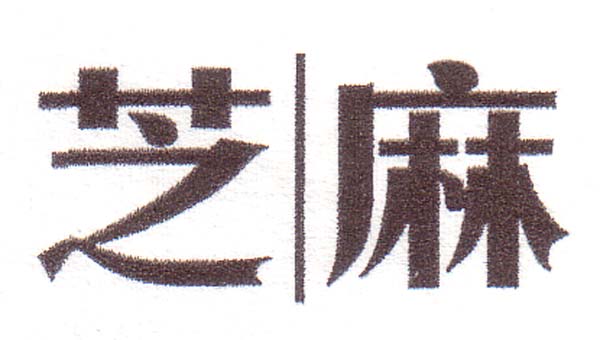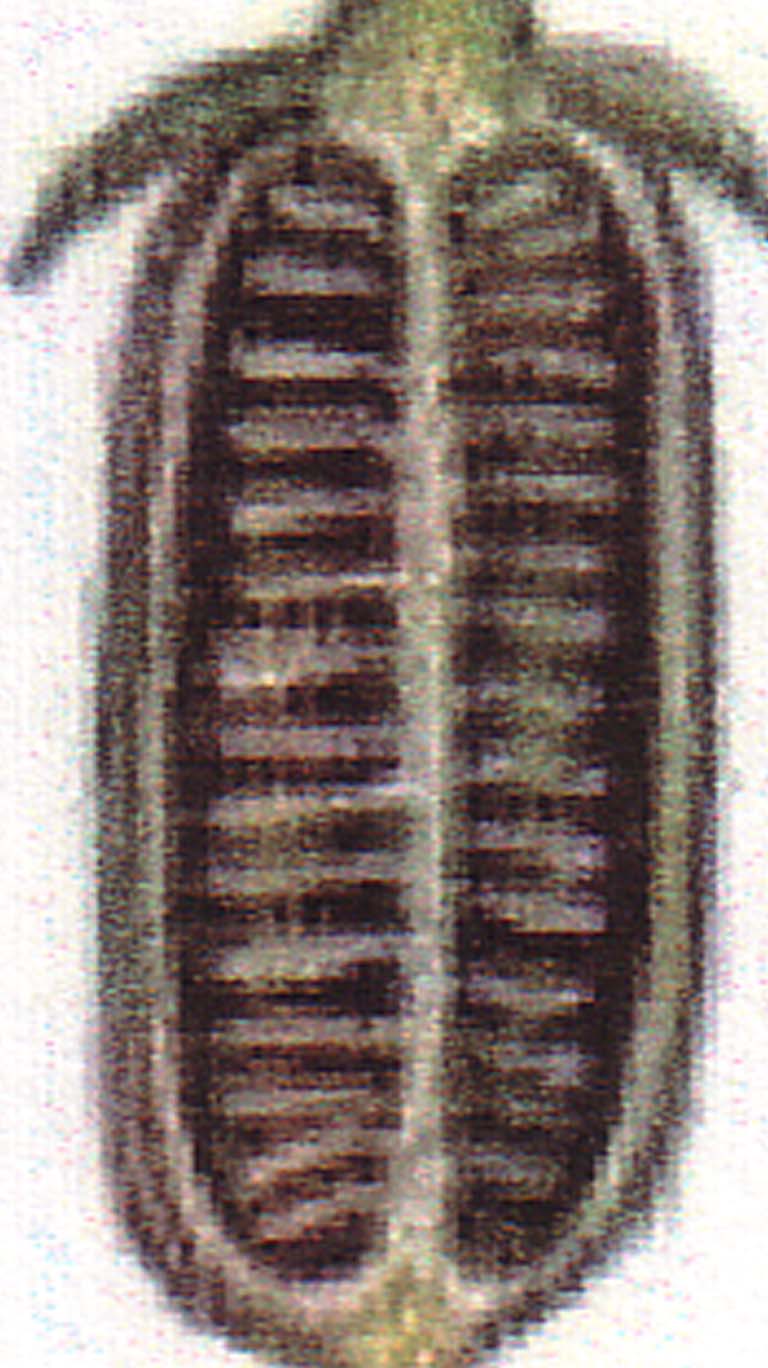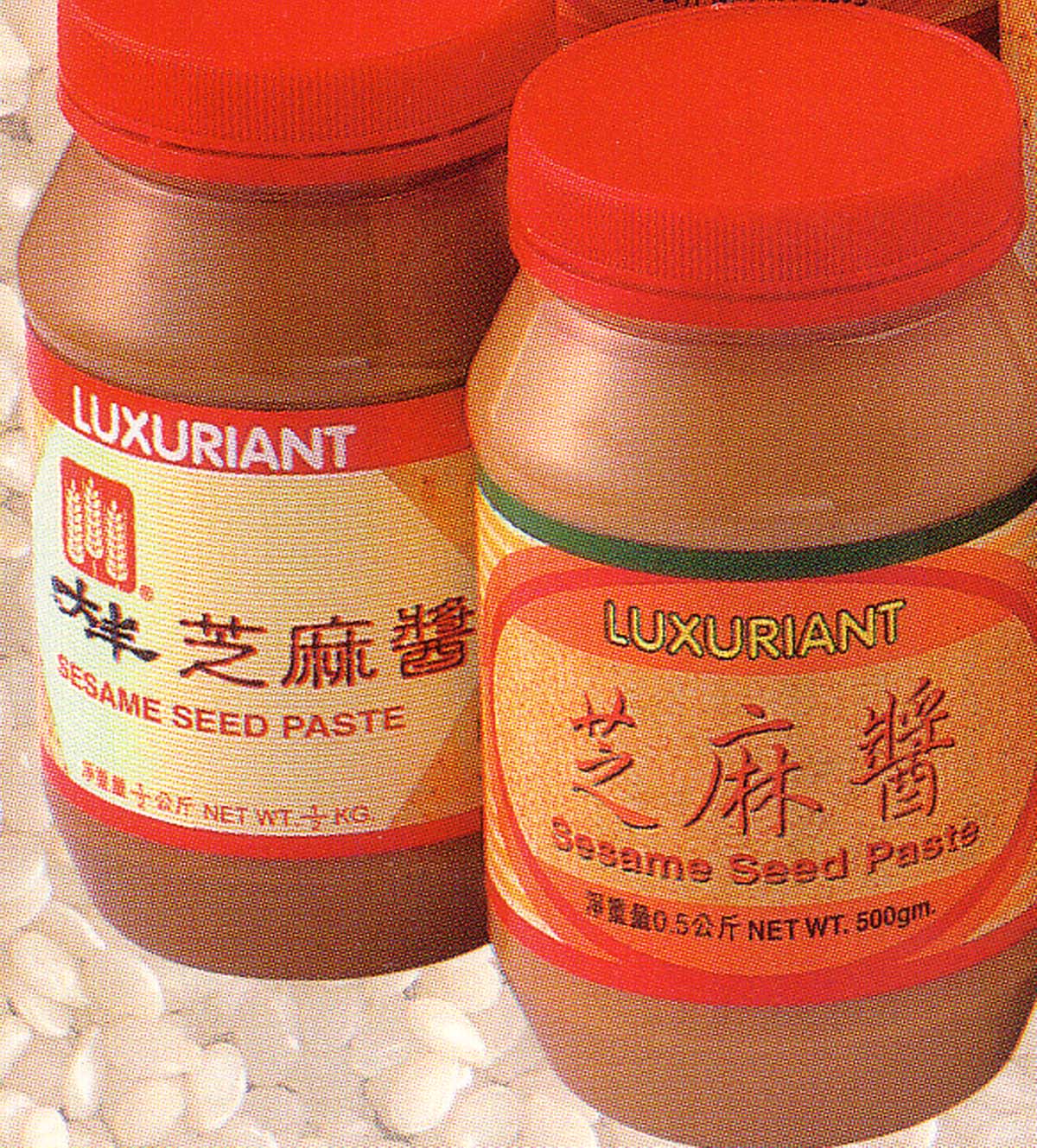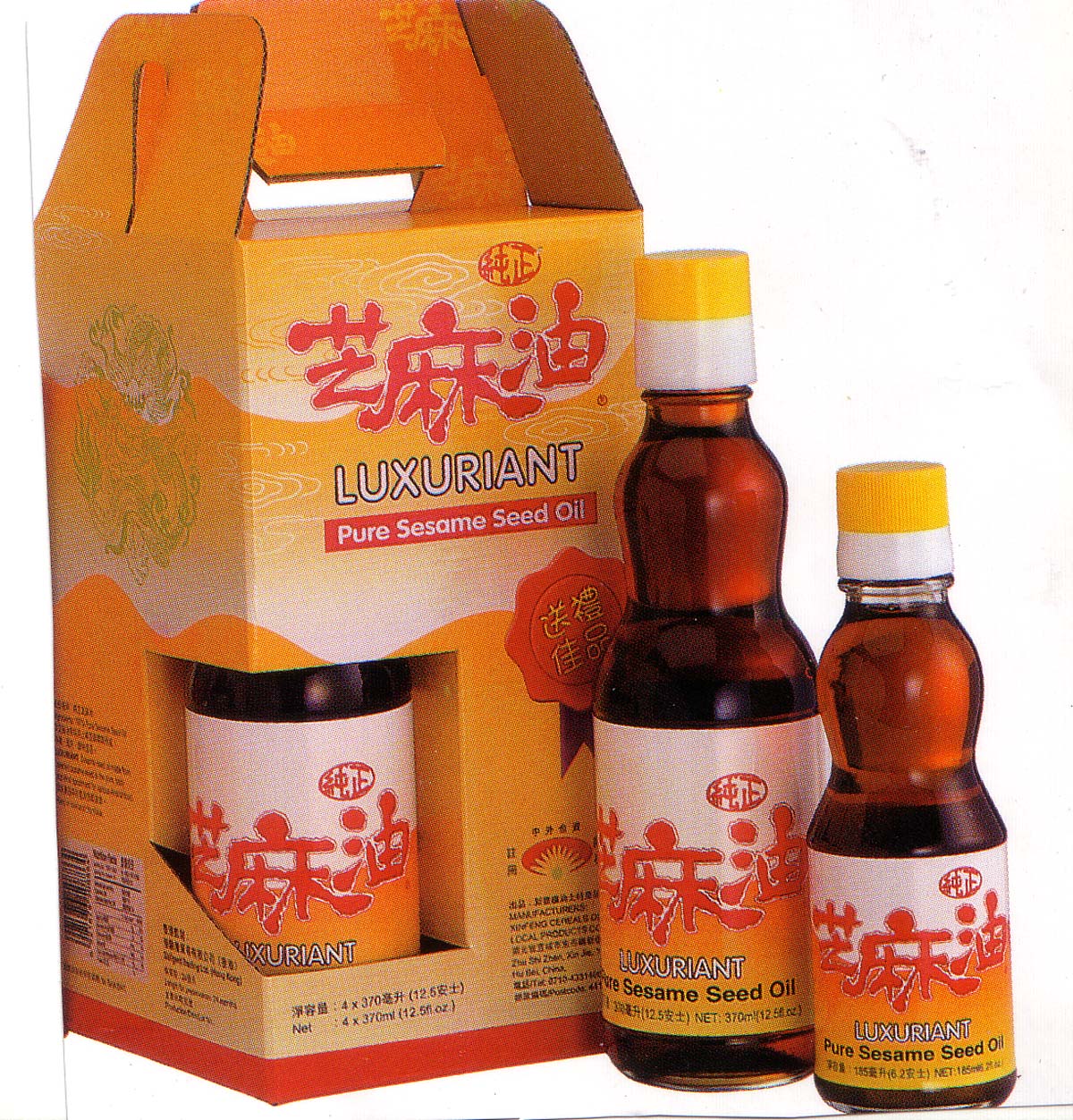
| What is Flavor and Fortune? |
| How do I subscribe? |
| How do I get past issues? |
| How do I advertise? |
| How do I contact the editor? |
Read 12920598 times
Connect me to:
| Home |
| Articles |
| Book reviews |
| Letters to the Editor |
| Newmans News and Notes |
| Recipes |
| Restaurant reviews |
| Article Index (all years, slow) |
| List of Article Years |
| Article Index (2025) |
| Article Index (last 2 years) |
| Things others say |
| Related Links |
| Log In... |
| Authors |
| Categories & Topics |
Sesame as Seed and Oil
| by Jacqueline M. Newman |
Sauces, Seasonings, and Spices
Winter Volume: 2006 Issue: 13(4) page(s): 21, 22, and 23
 The most common seeds as seasonings are the oval shaped ones called Sesamum indicum. Commonly known as sesame seeds, when toasted they have a rich nut-like flavor. The Chinese have used them for thousands of years whole, crushed, made into a paste, and as a milk, and they have used the oil extracted from them. Because these seeds are loaded with oil, they can easily go rancid. Not everyone knows to store them in a cool place; in this day and age, a refrigerator works fine.
The most common seeds as seasonings are the oval shaped ones called Sesamum indicum. Commonly known as sesame seeds, when toasted they have a rich nut-like flavor. The Chinese have used them for thousands of years whole, crushed, made into a paste, and as a milk, and they have used the oil extracted from them. Because these seeds are loaded with oil, they can easily go rancid. Not everyone knows to store them in a cool place; in this day and age, a refrigerator works fine.
 The Chinese adore these seeds which can be seen here enlarged and in a pod; and they adore sesame oil. They even adore flours made from the seeds. They particularly like them toasted. Though used for ever so long, they were not the first culture to use products made from them. That honor probably belongs to the Assyrians who made wines from them and/or to the Babylonians who used them when making perfumes.
The Chinese adore these seeds which can be seen here enlarged and in a pod; and they adore sesame oil. They even adore flours made from the seeds. They particularly like them toasted. Though used for ever so long, they were not the first culture to use products made from them. That honor probably belongs to the Assyrians who made wines from them and/or to the Babylonians who used them when making perfumes.
Thousands of years back, the Chinese used sesame seeds primarily for their oil. They burned it as a light source. Another pre-food use was when burning them to make soot for use in calligraphy. Soon there after, they began to use the seeds and the oil to flavor their foods. One document indicates they did that more than five thousand years ago and that they were used for ritual and medicinal purposes. No second source confirms these as the first Chinese uses, so if any reader knows about such early sources, the editor would appreciate this input.
 White sesame seeds are hulled and made into a paste. To do so, their seed coats are removed. Once opened, a jar such as these are best kept refrigerated. Black sesame seeds are close relatives or they can be a different variety entirely. The most common black ones are Sesamum radiatum, and they are commonly known as 'beni' or 'bhuku' seeds. The leaves of both and other sesame types can be eaten raw as a vegetable, but most Chinese do not indulge. There is also a sesame relative called Ceratotheca sesamoides. It is also known as 'false sesame' and is used, but it is not as common.
White sesame seeds are hulled and made into a paste. To do so, their seed coats are removed. Once opened, a jar such as these are best kept refrigerated. Black sesame seeds are close relatives or they can be a different variety entirely. The most common black ones are Sesamum radiatum, and they are commonly known as 'beni' or 'bhuku' seeds. The leaves of both and other sesame types can be eaten raw as a vegetable, but most Chinese do not indulge. There is also a sesame relative called Ceratotheca sesamoides. It is also known as 'false sesame' and is used, but it is not as common.
The common tan to brown sesame seeds are white after their seed coats or hulls are removed. That was no easy process in earlier days before sophisticated mechanization. Then, they were harvested from their pods over a large cloth that was just waiting for them to burst forth. Another early harvesting technique was to beat the pods gently over the same cloth to speed extricating them. Nowadays, machines make light work of the process used to extract the many seeds in half inch or smaller pods. Do see an enlarged illustration of a sesame seed pod on this page.
 Toasting the seed is easy and done after hulling. Extracting the oil can be done before or after that process by pressing them or by chemical means. The oil becomes brown when removed from toasted seeds. This form of the oil was called 'fragrant oil' and sometimes called 'Chinese sesame oil.' The cake remaining after it is pressed or expelled, as the chemical means is called, is usually ground into flour. Both toasted seeds and the oil made from them are be used for cooking and flavoring. Black sesame seeds are mostly used for decor and for texture and taste where they can be baked into or on a food product.
Toasting seeds is commonplace at home, but pressing or expelling oil rarely is. Toasting the seeds requires taking constant care because they burn easily. At home a pan will do, commercially, large ovens do the job or making brown seeds. But truth be told, they are best when toasted just before use.
Toasting the seed is easy and done after hulling. Extracting the oil can be done before or after that process by pressing them or by chemical means. The oil becomes brown when removed from toasted seeds. This form of the oil was called 'fragrant oil' and sometimes called 'Chinese sesame oil.' The cake remaining after it is pressed or expelled, as the chemical means is called, is usually ground into flour. Both toasted seeds and the oil made from them are be used for cooking and flavoring. Black sesame seeds are mostly used for decor and for texture and taste where they can be baked into or on a food product.
Toasting seeds is commonplace at home, but pressing or expelling oil rarely is. Toasting the seeds requires taking constant care because they burn easily. At home a pan will do, commercially, large ovens do the job or making brown seeds. But truth be told, they are best when toasted just before use.
The brown sesame oil the Chinese use is made from toasted sesame seeds. One can purchased oil from untoasted seeds, but that is rarely used in Chinese cooking. More common is toasted brown or toasted brown oil flavored with chili. That is called chili oil and used as a dip or as a flavoring oil. Rarely are either used for frying or stir-frying. To make chili oil, heat brown sesame oil and several chili peppers. As they begin to turn brown, and before they turn black, remove the oil from its heat source. Allow it to col overnight, then strain out the peppers and any extraneous matter. This makes better chili oil than any purchased product. It stays on the shelf for some months. Do not put it in the refrigerator to extend its shelf-life because it gets thick and can not be poured.
The Chinese believe that beyond sesame seeds or oil as flavoring, these food have many health benefits. The oil soothes sunburn and other skin conditions. It used to be used for that purpose when someone had smallpox. Besides skin lubrication, the Chinese use it for making their hair shiny. Both oil and seed are used to nourish liver, kidneys, and blood, and are recommended for yin deficiencies, relief of dizziness, reduction of headaches, and to lubricate the intestines.
Besides coating foods with seeds or flour to increase flavor and aromatic appeal, the Chinese use the oil as a mild cathartic mixing it with chicken eggs. Concern needs to be paid as seeds and oil, though rare, can cause allergies. Sesame seeds and oil can be serious and powerful allergens for those susceptible; they need to avoid both all together.
In the Chinese yin/yang dichotomy, sesame is considered neutral. The seeds are said to ease ringing in the ears. Chinese traditional medical practitioners, known as TCM doctors, tell their elderly patients to mix them with coix seeds, wine, and rheumannia root, add rice and then to boil them. This prescription aids poor vision due to aging.
Sesame seeds are high in oil, have about twenty-five percent protein with high amounts of the amino acids methionine and tryptophan. This will be reduced, if the seeds are toasted. The seeds also have slightly less saturated fat than olive oil (13 versus 14%), more polyunsaturated fat (46 versus 9 %), and less mono-unsaturated fats (41 versus 71%),
Black sesame seeds are more commonly used medicinally. Their most common culinary uses are when sprinkled on or in dim sum or other bakery products. To the Chinese, black hair and red lips are signs of beauty; these black seeds are believed to help hair grow healthier and blacker. Another value is that they are said to carry waste from the body, particularly in pregnant women.
White sesame seeds are often ground into flour and used with other flours to make noodles, breads, cakes, and sweets. When the Chinese are tired, they like to eat these products to remain alert. They also believe black or white sesame seeds reduce hardening of the arteries, slow tuberculosis, and help to avoid high blood pressure. Some TCM practitioners tout them to extend the life span, if eaten daily.
Food-wise, sesame oil is adored sprinkled on vegetables just as they are ready for the table. The seeds are used as coatings as for sesame seed balls, and particularly for other fried foods. There is no limitation in their use, other than for the allergic, and TCM practitioners say that children and the elderly should have some every day.
The recipes that follow are easy to make, many even easier to eat too much of. Use the seeds and the oil in moderation; and do be sure to only use those that are not rancid.
| Lucky Rolls |
|---|
1 pound Chinese yams, peeled and cut in two-inch pieces 2 Tablespoons cooked or canned chick peas, mashed 2 Tablespoons cooked or canned peas 1 Tablespoon minced red pepper 1 Tablespoon black sesame seeds 1/2 teaspoon salt 1 teaspoon sugar 1/4 teaspoon ground white pepper 3 Tablespoons sesame seed or sweet potato flour 1 egg white 1 cup vegetable oil 1/2 cup sesame seeds Preparation: 1. Boil five cups of water, add yam cubes, reduce the heat, and simmer for twenty minutes or until soft. Drain, mash, and allow to cool. 2. Mix chick peas, green peas, red pepper pieces, sesame seeds, salt, sugar, and the white pepper with the mashed yams. 3. Mix flour with two tablespoons warm water, adding more if needed, to make a simple batter. Add egg white and mix well. 4. Take two tablespoons of the yam mixture and roll it cigar-shaped. Dip it into the batter, and roll it into the sesame seeds. Repeat until all rolls are made. 5. Heat oil, and deep fry the rolls until they are light tan. Then drain them on paper towels. Serve. |
| Mock Chicken |
|---|
1/2 cup flour 3 large almond mushrooms, cut in quarter- inch long sticks 1 cup vegetable oil 1 teaspoon minced peeled fresh ginger 1 teaspoon minced fresh peeled garlic 1 sheet black or purple seaweed, crumbled 1 small chili pepper, seeded and minced 1 teaspoon white sesame seeds 1 Tablespoon oyster sauce 1 teaspoon sugar 1 teaspoon sesame oil 2 large lettuce leaves, one shredded, the other left whole Preparation: 1. Mix flour with two tablespoons water to make a batter. 2. Heat oil in a wok or pan, Take about eight thin mushroom strips and holding them together, dip them into the batter, remove, and deep fry turning once or twice until golden. Drain on paper towels. Repeat doing several bundles at a time until all are fried and drained. Discard all but one teaspoon of the oil, leaving it in the wok or pan. 3. Stir-fry the ginger and garlic in the remaining teaspoon of oil for half minute, then add chili pepper pieces and stir before adding sesame seeds, oyster sauce, sugar, and sesame oil. Remove from the heat. 4. Put whole lettuce leaf on a platter. Add shredded lettuce, then top with the mushroom bundles. Serve. |
| Sesame Balls |
|---|
2 and 1/2 cups glutinous rice flour 2 Tablespoons Chinese wheat flour or cake flour 1 Tablespoon sesame oil 1 Tablespoon sugar 10 Tablespoons red bean paste 1 cup sesame seeds 2 cups vegetable oil Preparation: 1. Mix rice and wheat flours, then add sesame oil and sugar and mix well. Knead this dough until smooth, then divide it into ten batches and roll each into a ball before making a whole into its center. 2. Insert one tablespoon of bean paste into each ball of dough, then seal dough around it so that none remains exposed. 3. Prepare a bowl of cool water, and quickly dip one ball into it then roll it in the sesame seeds. Set aside and repeat until all are coated with the sesame seeds. 4. Preheat the oil to 275 degrees F and deep-fry the sesame balls until they float and are golden. Drain on paper towels. Serve warm or hot. |
| Sesame Oil Flavored Sauce |
|---|
1 teaspoon vegetable oil 1 clove garlic, peeled and minced 3 slices fresh ginger, peeled and minced 2 Tablespoons sesame oil 2 Tablespoons thin soy sauce 1/2 teaspoon salt 2 Tablespoons cornstarch Preparation: 1. Heat vegetable oil in a small pot, then add garlic and ginger and stir-fry half minute before adding the sesame oil and the soy sauce. 2. Mix salt and cornstarch with half cup cold water. Stir into the sauce mixture and stir until slightly thickened and clear. Serve on or next to dumplings or other dough-wrapped foods. |
| Fried Fruit Pies |
|---|
1/2 cup pitted Chinese brown dates, minced 1/2 cup white raisons, each one cut in half 1/2 cup dried lei plums or apricots, minced 1/4 cup sesame seed paste or creamy peanut butter 1/4 teaspoon salt 1 teaspoon sugar 1 Tablespoon sesame seeds 1 cup cornstarch, divided in half 3 egg whites, lightly beaten 3 Tablespoons white sesame seeds 2 cups vegetable oil Preparation: 1. Mix the three fruits, then add sesame seed paste, salt, sugar, sesame seeds, and half the cornstarch. Divide the mixture in ten pieces. Roll each part and flatten it somewhat. 2. Mix egg whites with the remaining cornstarch. 3. Heat oil in a wok or pan then dip one flattened pie-shaped item in the batter and deep fry until golden. Drain on paper towel. Repeat until all are fried and drained. Serve warm. |

Copyright © 1994-2025 by ISACC, all rights reserved
Address
3 Jefferson Ferry Drive
S. Setauket NY 11720